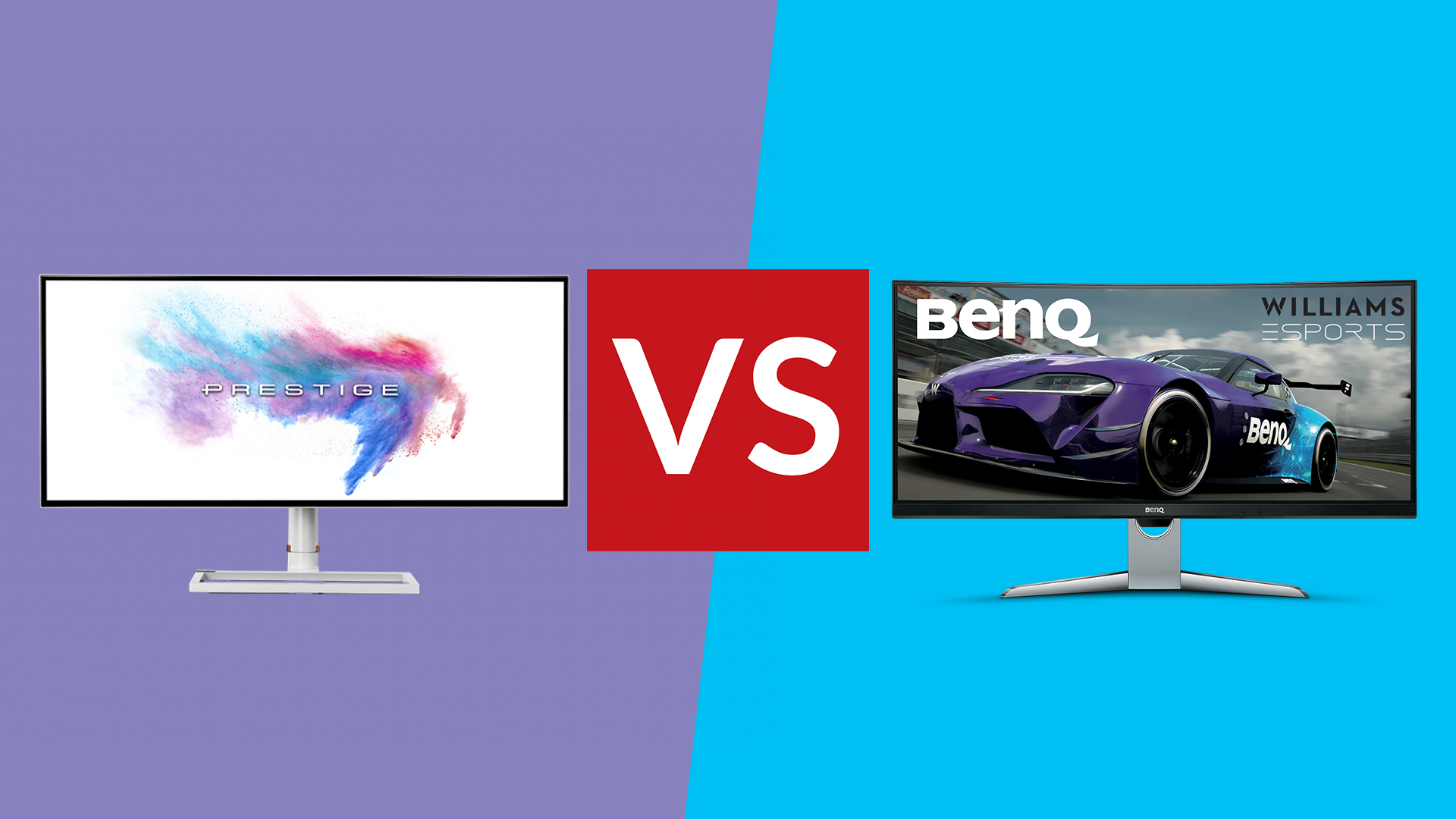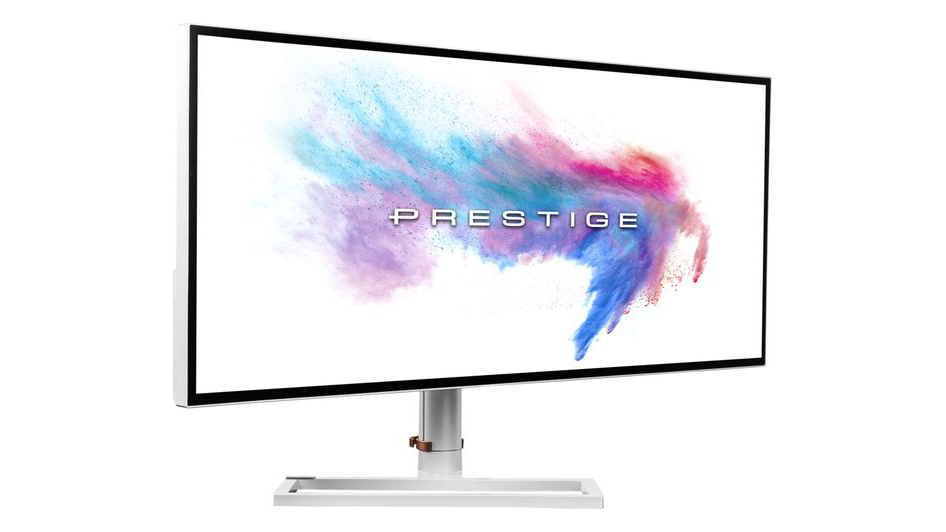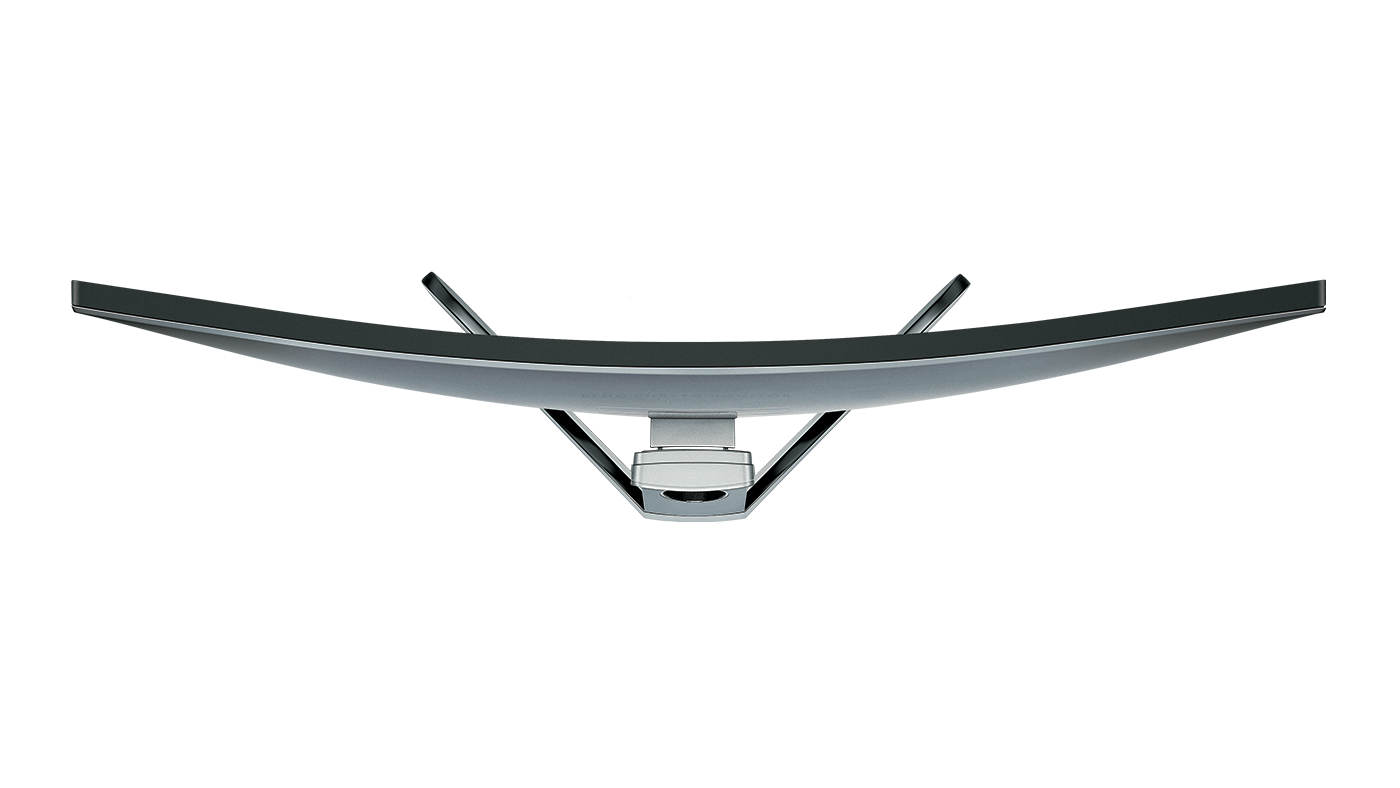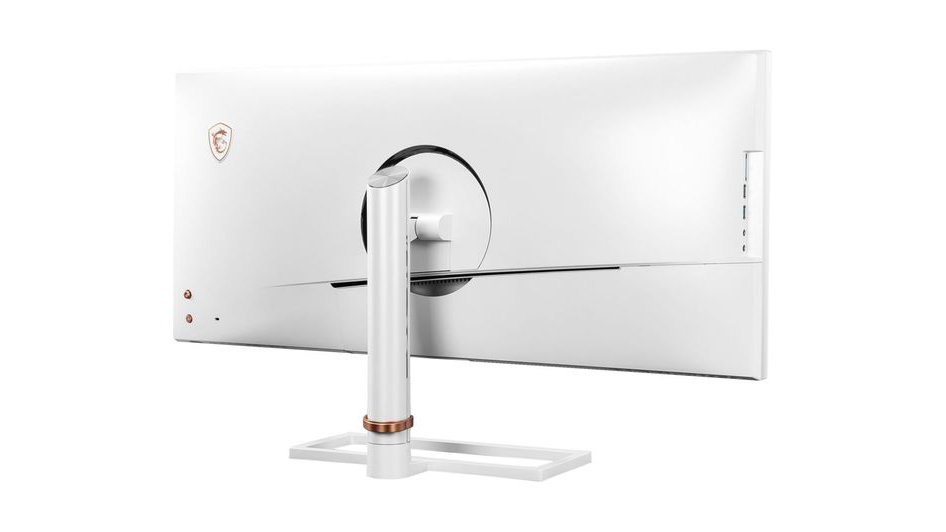MSI Prestige PS341WU vs BenQ EX3501R: which ultrawide pro monitor is best for you?
MSI Prestige PS341WU vs BenQ EX3501R is a battle of excellent home office ultrawide monitors, so let's see how they compare

If it's an ultrawide monitor with easy USB-C single-cable connectivity you want, look no further than the MSI Prestige PS341WU vs BenQ EX3501R – these are two top pro monitor option, and are two of the best monitors for MacBook Pro thanks to that connectivity, which works great for more of the best laptops with USB-C too, of course.
With a name like the MSI Prestige, you’d expect a monitor to be good: and it is. The PS341WU is a 34-inch ultrawide screen aimed at video editors, its 21:9 aspect ratio, 5K resolution and 60Hz refresh rate perfect for viewing UHD video at native res and still having room for some tool palettes and other software elements around the outside.
All it doesn’t have is a curve, which is where the Benq EX3501R comes in. From corner to corner it’s even bigger, with a 35-inch diagonal, and similarly ultrawide, but it lacks such a high resolution, coming in at 3440x1440 pixels with a 100Hz refresh rate.
Both these screens are aimed at video editors and other creative workers, and have features that will appeal to that sector of the market – though will also undoubtedly attract gamers and others who just like to have a massive screen – but which is better? Let’s get creative and find out.
MSI Prestige PS341WU vs BenQ EX3501R: Price & features

The BenQ EX3501R has a mid level of curve.
Surprisingly, you don’t need to lay down an unreasonable amount of cash for either of these gigantic screens. They cost more than your average 24-inch Full HD monitor, yes, but they’re now out of line with the likes of the best 4K monitors.
The MSI Prestige PS341WU will set you back £1,099/$1,199, while the Benq EX3501R costs £599.99/$749.99. The difference there is accounted for by the MSI’s higher resolution and brightness, as well as its screen technology.
Both screens use the IPS tech that’s broadly considered the best in terms of brightness, colours and viewing angles, but the MSI uses an improved ‘Nano’ variant. This is similar to the Quantum Dot tech beloved of Samsung, and was originally created by LG. It increases response times and colour gamut thanks to a nano-particle layer applied as part of the screen's layering.
Get all the latest news, reviews, deals and buying guides on gorgeous tech, home and active products from the T3 experts
Both screens also feature a USB hub (the MSI has one more port than the Benq), so you can connect your peripherals without needing to reach around the back of a desktop workstation, or have them cluttering up a laptop if you like to easily whip it away from your desk.
MSI Prestige PS341WU vs BenQ EX3501R: Image quality

The MSI offers brighter images with more colours.
Naturally, when you’re looking at screens this size with this kind of technology behind them, the image quality is excellent from the very off.
The Benq, with its 16.7 million colours, sounds impressive, but it’s beaten by the MSI which claims a 7 billion-colour gamut. The Benq can display 100% of the sRGB gamut and has HDR10 support (though a more limited brightness for the HDR. The MSI features DisplayHDR 600 certification and manages 98% of the wider DCI-P3 gamut aimed at digital cinema. Basically, the Benq is good for colour and contrast, but the MSI is notably better.
Both screens are sharp, and when fed a signal that matches their native resolution, capable of excellent renditions of digital video. The EX3501R, with its lower cost and faster refresh rate, will potentially appeal to gamers too, for whom the additional immersion offered by the curved screen can be a bonus.
MSI Prestige PS341WU vs BenQ EX3501R: Design & connectivity

The Benq's design is fairly simple – suited to home offices.
Their chassis designs are precisely what you’d expect from modern screens, with the bezels kept nice and thin. Neither screen has webcams or other front-mounted protrusions to spoil its lines, though the Benq, with its thicker bottom bezel, does have a ‘chin’ containing an ambient light sensor.
Round the back, the MSI is fitted with one DisplayPort 1.4 port. There are two HDMI 2.0 sockets too, which are limited to 4K at 60Hz – there's no HDMI 2.1 here. There’s a USB Type-C input too, and you’ll need to use this or the DisplayPort to get the full 5K resolution at 60Hz.
The Benq has exactly the same selection – and hits the same limits too, as those HDMI 2.0s aren’t quite fast enough to support its maximum resolution, especially at its top 100Hz framerate. Of interest to gamers will be this screen’s support of AMD’s FreeSync variable refresh rate technology.
The HDMI ports on both screens are better used for consoles or media players churning out 4K at 60Hz, a combination that these screens will still display very nicely, albeit with black bars at the sides. Neither screen has speakers, but both have audio passthrough to a 3.5mm headphone socket.
The stands that accompany the displays are perfectly fine, with the ability to adjust the height, tilt and angle within fairly tight margins. The MSI also has a VESA mount included, but you'd need to get one for the Benq as an extra if you want to wall- or arm-mount it.
MSI Prestige PS341WU vs BenQ EX3501R: Verdict

The MSI has some extra design flourishes – it feels like MSI's heritage as a premium gaming brand is on show.
Either of these screens would make a magnificent addition to the desk of a creative. For video editors and some designers, the MSI – with its wider colour gamut, better HDR performance and higher resolution – will be a very tempting prospect indeed. For anyone else, the Benq offers almost as much for less outlay, and both monitors will find fans outside of their target demographics.
With its gaming-friendly features, the Benq is bound to find its way into the bedrooms of dedicated PC gamers, powered by one of the latest graphics cards. Curved screens aren’t for everyone, however, so decide whether a flat screen is an absolute necessity before buying. The MSI, by contrast, looks as premium as its features, and will surely be just at home as a prestige addition to a home office as it will be in the high-tech world of video editing.